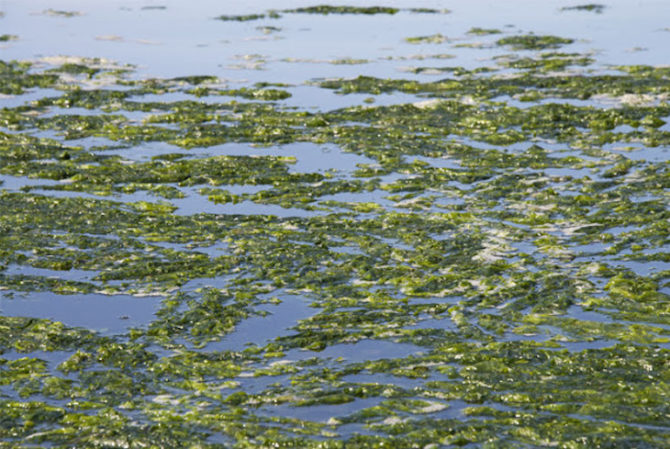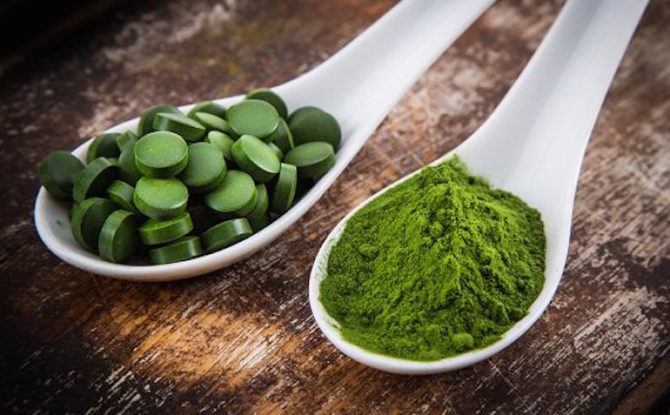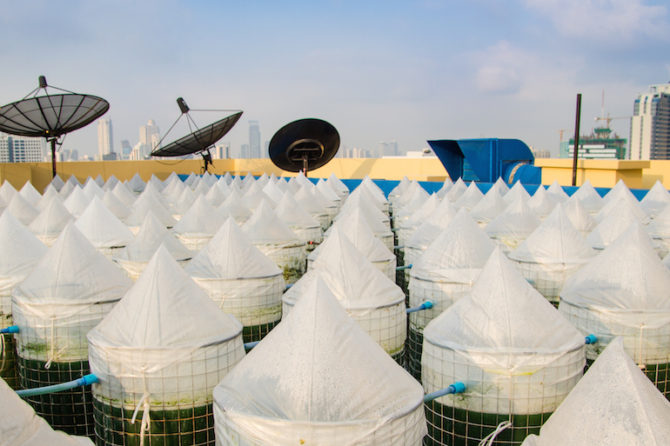Introducing the kale and spinach of the future: Spirulina. Some of you may have heard about spirulina here and there, but may not know exactly what it is and what it does for you and the environment. However, with environmental sustainability issues slowly accumulating, it’s time for people to get to know this green algae that could become the main ingredient in your salads in the near future.

Photo courtesy of thefullhelping.com
It may sound exotic and rare, but this green-blue algae is actually one of the most common and oldest species on Earth today. You know the smelly, green gunk floating around ponds and lakes everywhere? That’s spirulina. It’s a species that’s really figured its role in life considering that it’s been floating around like that for about a billion or so years feeding.
The 21st century health gurus aren’t the first to start ingesting it either; the Aztecs figured out the wonders of spirulina years ago. If you want to get really picky, fish and other creatures starting eating it way before then.

Photo courtesy of riseearth.com
With spirulina practically overflowing in beneficial nutritional content, this healthy specimen can take the coveted spot next to superfoods like ginger. Unlike meat, over half of its weight consists of protein and provides the complete set of the 8 essential amino acids that your body needs.
Not only that, it’s only 3.6 calories per gram (compared to 4 calories per gram of carbohydrates and protein and 9 per gram of fat) and is high in vitamins and minerals like calcium, magnesium and iron. That being said, you really need to devote yourself to eating spirulina throughout the day every day to get your daily recommended amount of minerals and vitamins.

Photo courtesy of authoritynutrition.com
It’s not surprising that high nutrition content comes with medicinal properties. Not much can be said with certainty as studies are still ongoing, but spirulina has shown to have anti-cancerous properties and anti-inflammatory properties. Studies have also shown that the cyanobacteria can help lower cholesterol levels, which is beneficial to a variety of diseases.
A lot of foods have loads of disease-preventing nutrients, but few are sustainable as well. Spirulina doesn’t need acres of land to grow on and doesn’t suck a ton of nutrients from the Earth’s soil like livestock or plants.
As micro-algae production grows, new start-up companies like EnerGaia have come up with more efficient ways to grow spirulina by culturing it in bioreactor tubs on rooftops of urban cities and harvesting it multiple times a week, something that’s impossible to do livestock and with other plant superfoods like kale. It’ll be a major break through if farmers find a way to raise cows on the roof.

Photo courtesy of energaia.com
The glorious harmony of nutritional, medicinal and sustainable properties of spirulina is too valuable for it to pass through as just another superfood trend. So, don’t be surprised if you find yourself eating a forkful of spirulina a couple years from now.


